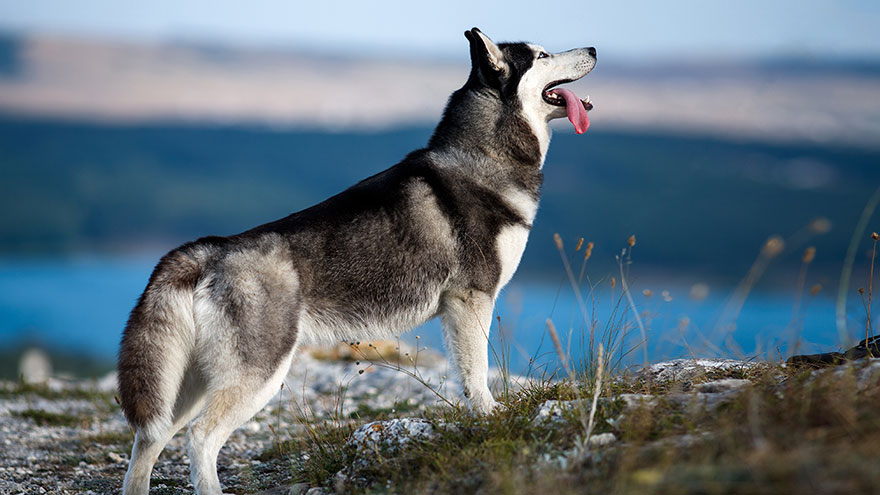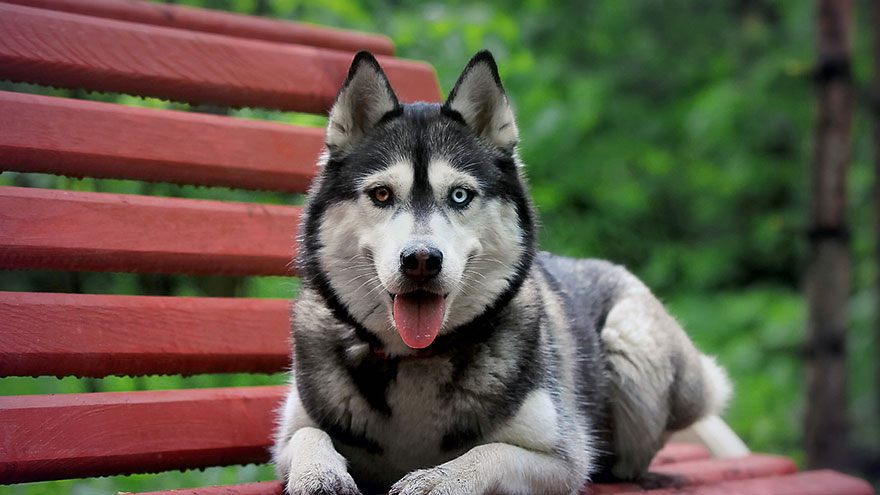How to Identify a Siberian Husky
Siberian huskies were originally bred in Siberia to carry moderate loads over long distances. They were brought to Alaska to race in 1909, and were first recognized by the American Kennel Club in 1930. They have retained a distinctive appearance and demeanor that make them easy to identify.
Wolflike Appearance
The medium-length hair of purebred Siberian huskies does not conceal the shape of their face and body, which resemble that of a wolf. Siberians have blue or brown almond-shaped eyes that are either blue or brown, a mixture of the colors or one of each. Their triangular ears stand erect and are pointed with a slightly rounded tip.
The ears sit high on the head and are closer together than the Alaskan malamute — an Arctic dog with a similar appearance — and Siberians are generally smaller as well. Females stand 20 to 22 inches high at the shoulders, while males stand 21 to 23.5 inches. Weight ranges from 35 to 60 pounds. They are quick and light on their feet with a smooth, graceful gait.

Colors and Markings
The American Kennel Club recognizes six colors of Siberian huskies: agouti and white, gray and white, black and white, red and white, sable and white, and pure white.
Agouti is banded in color with a cream, rather than white, undercoat. Markings can include black points, piebald — mostly white with spots of one other color, often black — and pinto.
High-energy Siberian huskies will thrive best in households that give them lots of attention and outdoor playtime.
Energetic Temperament
The dog sitting placidly in a home’s front yard is definitely not a Siberian husky. He’s the high-energy one chasing squirrels in the backyard and trying to escape by digging under the fence.
Never walk Siberian huskies without a leash. With their curiosity and mischievous nature they will escape at every opportunity.

Room to Run
Siberian huskies need a fenced yard to run around in, or they must be taken on a long walk at least daily. Fences should be sturdy and sunk well into the ground or they will dig their way out.
Persistent Predators
Rabbits, squirrels, cats and other small animals must take care when Siberian huskies are nearby. It’s their predatory instinct to chase — and catch if they can — any and all of them.
Friendly Frolicking
Though they may look imposing to some, Siberian huskies are friendly to everyone. They’re more likely to invite strangers to play than to bark them away.
Siberian huskies are curious and intelligent and can become destructive if left alone too long. As a working dog breed, this instinct kicks in when they’re taught to pull a sled and they can be quite helpful.
Healthy and Hardy
Bred to withstand subzero temperatures, Siberian huskies are hardy and especially enjoy cold weather rather than heat. They are prone to eat less food than other dogs of their size, and thrive when they maintain a lower weight.
Although some may suffer hip dysplasia or eye disease, most are quite healthy. With proper care, a healthy weight and plenty of exercise, Siberian huskies live between 12 and 15 years.

